Have you ever caught a whiff of something so nasty you had to physically step back… only to find out it tastes like a dream?
Yeah, welcome to the bizarre, beautiful world of foods that betray your nose but bless your taste buds. It’s one of nature’s biggest jokes — and honestly, we’re here for it. Because sometimes, the stinkiest dishes hide the most heavenly flavors, just waiting for a brave soul to dig in.
From fruits that smell like a garbage truck’s worst day to cheeses that could clear a room, these foods are proof that good things often come in seriously questionable packages.
Durian
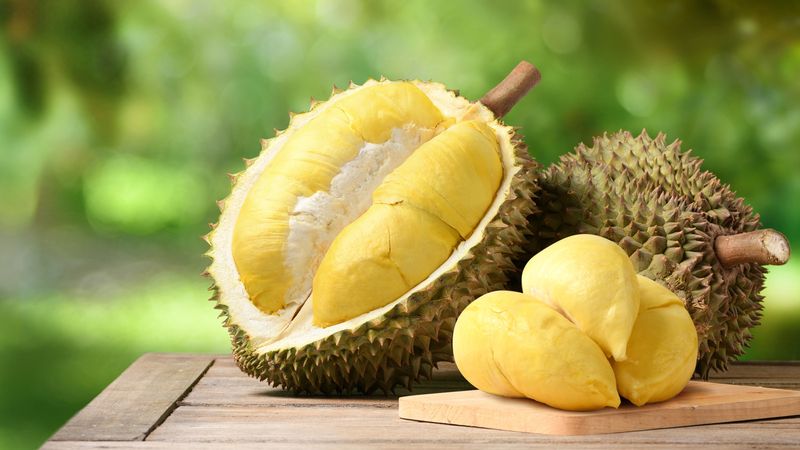
Regarded as the “king of fruits,” durian boasts an aroma that has been likened to rotting onions, sewage, and gym socks.
Not exactly enticing on the nose, but those who dare to taste it are in for a surprise. The fruit’s interior is akin to a creamy, custard-like delight with a unique sweetness — think of a blend of banana, vanilla, and almond.
Beneath its thorny exterior lies a world of exotic flavor that has captivated the taste buds of many, especially in Southeast Asia. Though its smell might send you running, the taste keeps you coming back for more.
Durian’s presence in markets is unmistakable, a testament to its controversial yet revered status among the adventurous and the bold.
Stinky Tofu

A staple of street food culture in Taiwan and parts of China, stinky tofu indeed lives up to its aromatic reputation. The smell is often described as garbage left out in the sun, an unpleasant prelude to a culinary delight. But the magic happens when you take that first bite.
Deep-fried to crispy perfection, stinky tofu transforms into an earthy, savory, and tantalizingly tangy treat. The contrast between its smell and taste is stark, leaving those brave enough to try it pleasantly surprised.
Each bite offers a crunchy exterior with a soft, flavorful interior that has become a beloved snack for many. Its journey from pungent to palatable is a testament to the wonders of fermentation.
Blue Cheese
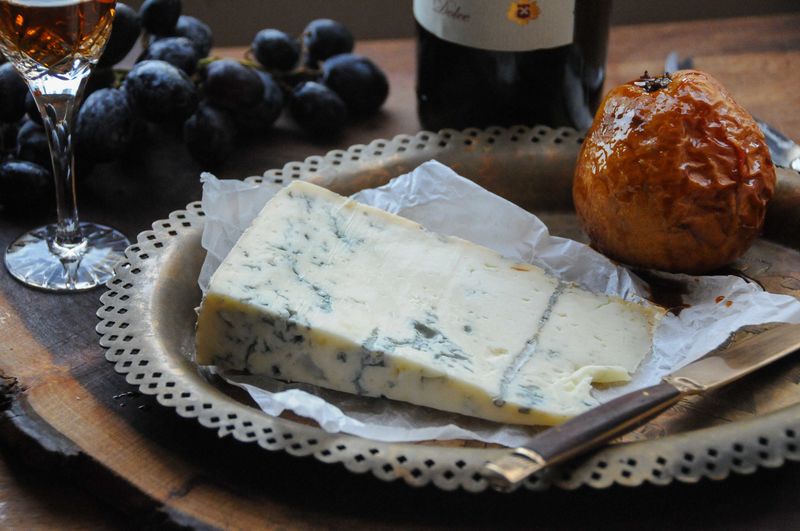
Blue cheese doesn’t hold back when it comes to olfactory impact, often compared to moldy socks or a musty cellar. Yet, those who indulge find a rich, tangy, and creamy flavor waiting on the other side of that pungent barrier. This cheese is a bold companion, perfect alongside fruit, wine, or a drizzle of honey.
Its distinct marbling of blue veins throughout the cheese offers both a visual and flavorful punch, challenging the palate in the most delightful way.
For the adventurous gourmand, blue cheese is more than just an acquired taste; it’s a passion, a statement of bold flavors that defy initial impressions.
Kimchi
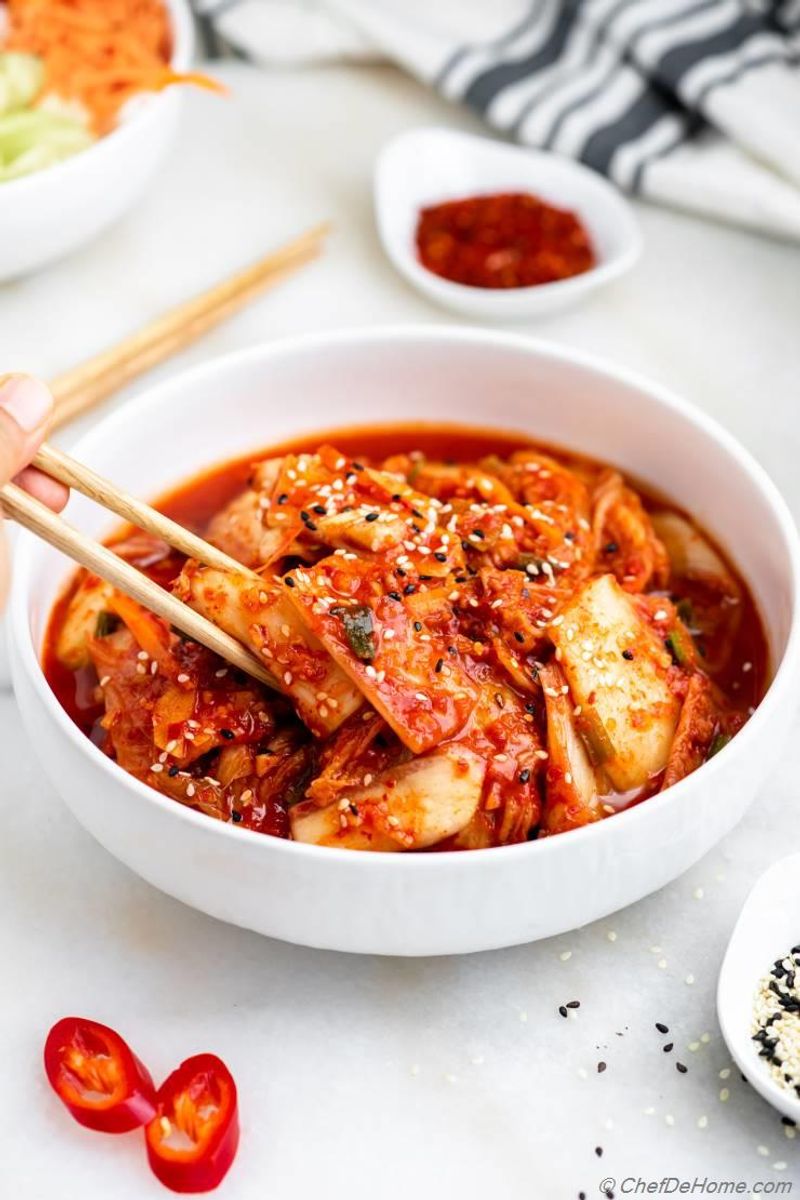
Kimchi’s punchy, fermented cabbage scent is unmistakable and can be overwhelming for newcomers. However, pushing past the initial funk reveals a symphony of spicy, sour, and umami flavors that elevate any dish. Each bite is an explosion of taste that can make any meal ten times better.
This Korean staple is more than just a side dish; it’s a cultural icon that embodies the spirit of Korean cuisine. Its versatility allows it to shine in stews, stir-fries, and even on its own.
Kimchi’s fermentation process imparts a complex flavor profile that continues to evolve, making it a dynamic addition to the culinary world and a beloved staple in many households.
Natto
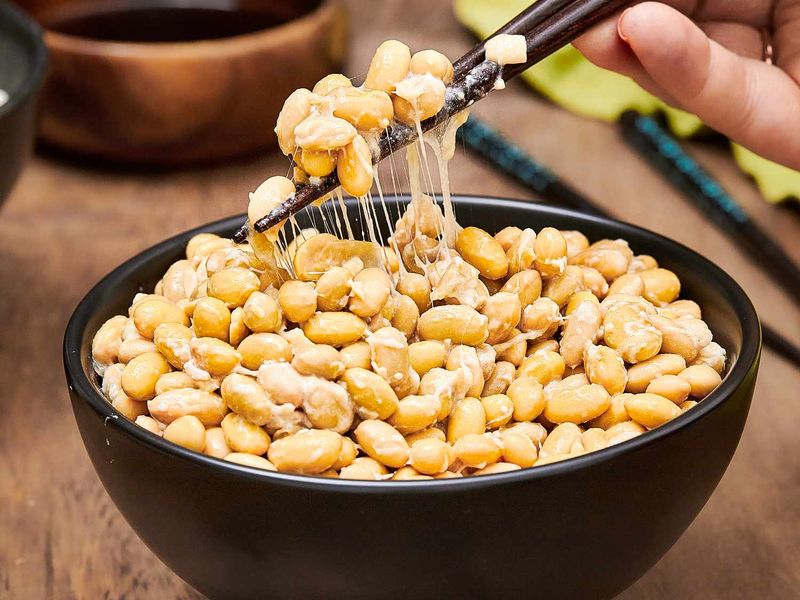
When it comes to natto, the first impression is often the hardest hurdle to overcome. Fermented soybeans known for their slimy texture and ammonia-like smell might not sound appealing, but the taste offers a different story. In Japan, natto is cherished for its nutty, savory depth and myriad health benefits.
Served over a bowl of steaming rice with a dab of mustard and a splash of soy sauce, natto takes on a unique character. The aroma might deter many, but for those who embrace it, natto’s flavor is a revelation.
Its sticky texture and robust flavor profile provide an experience that is both comforting and bold, a staple that has found its way into the hearts of many.
Salted Fish

Salted fish is a beloved ingredient in parts of Southeast Asia and the Caribbean, yet its smell might make you think twice. Reminiscent of something forgotten at the back of the fridge, the aroma is deceiving. Once cooked, though, it unfolds into a rich, salty, and deeply flavorful delight.
This transformation from pungent to pleasurable is a culinary magic trick that seasoned cooks know well. Salted fish complements hearty dishes, adding depth and character that is hard to replicate with other ingredients.
Whether served in a stew or fried to a crisp, its flavor is a testament to the art of preservation and the beauty of traditional culinary practices.
Vieux Boulogne Cheese

In the realm of cheese, Vieux Boulogne holds a distinct title: one of the smelliest cheeses on earth. Descriptions liken its aroma to sweaty feet, a vivid introduction to a uniquely mild, creamy, and buttery flavor.
On the palate, it reveals a gentle richness that belies its potent smell. This French cheese is an adventure for the senses, offering a taste that is surprisingly delicate and satisfying.
Its presence on a cheese board is sure to intrigue and challenge even the most seasoned cheese lovers, proving that appearances — and smells — can be wonderfully deceiving.
Century Egg
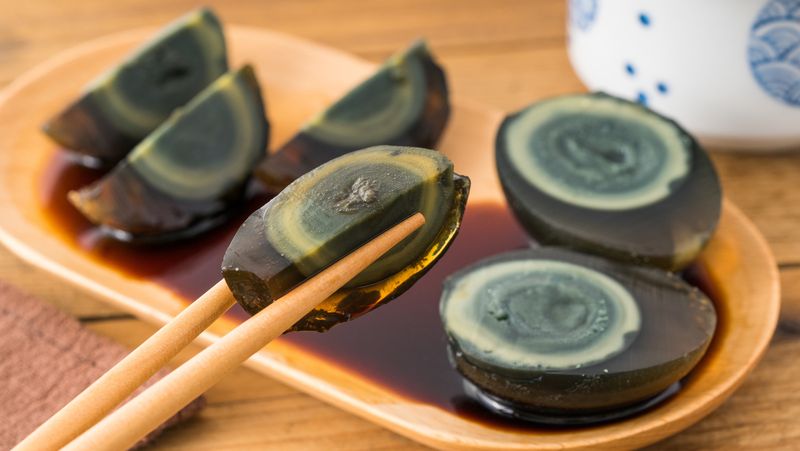
Century eggs might look intimidating, and their smell, reminiscent of ammonia and sulfur, does little to ease the mind. But those who venture beyond the scent discover a creamy, subtly savory flavor that is an umami bomb.
Paired with congee or sliced into salads, century eggs add a distinctive richness that enhances every dish it graces. The preservation process creates a unique texture and taste that is both a culinary and cultural marvel.
For the curious eater, century eggs offer a taste of history with every bite, a reminder of the innovative spirit of traditional Chinese cuisine.
Truffles
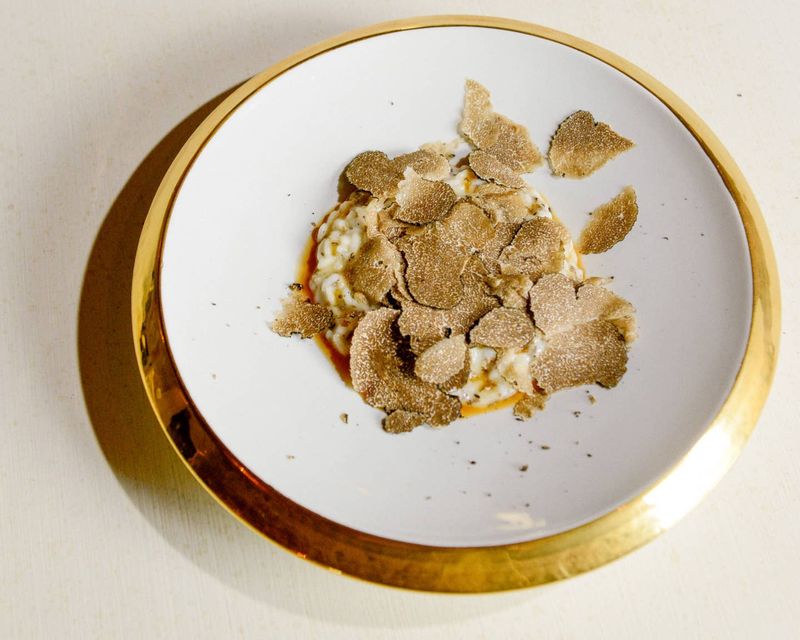
Raw truffles emit a musty aroma, reminiscent of damp earth with a hint of funk. Yet, when shaved over pasta or risotto, they transform the ordinary into something extraordinary. Their earthy, umami-laden flavor is nothing short of luxurious.
This prized ingredient is celebrated for its ability to elevate dishes to new heights, offering a depth of flavor that is both complex and indulgent. Truffles are a testament to nature’s ability to produce exquisite culinary treasures.
Used sparingly, they bring a touch of elegance and sophistication to any meal, turning a simple dish into a gastronomic experience worth savoring.
Cabbage (When Cooked)

Cooked cabbage can fill a kitchen with a strong, sulfurous aroma that sends some running for the hills. However, with proper seasoning, it transforms into a tender, sweet, and incredibly satisfying dish. Braised cabbage or corned beef and cabbage can turn this humble vegetable into a comfort food favorite.
The transformation from pungent to palatable is nothing short of amazing, illustrating the magic of cooking. Cabbage’s versatility makes it a staple in many cuisines, offering a canvas for flavors to shine.
Whether accompanying a hearty main or standing alone, cooked cabbage proves that even the simplest ingredients can surprise and delight.
Leave a comment